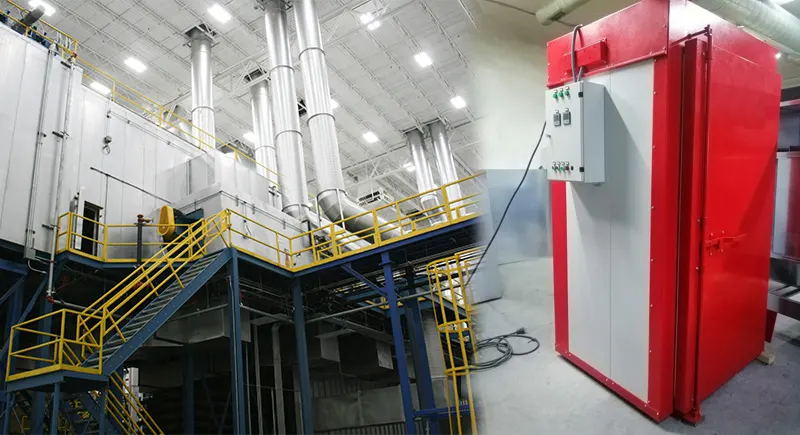When it comes to powder coating, innovation is the name of the game, and water-based powders are shaking up the industry. These environmentally friendly alternatives to solvent-based options are making waves, but curing them presents unique challenges. To achieve the perfect finish, understanding the intricacies of using powder coating ovens with water-based powders is essential. Let’s explore some lesser-known aspects of this process to help you get the best results.
Understanding the Basics of Water-Based Powders in Coating Applications
Water-based powders are a breath of fresh air for those looking to minimize environmental impact without compromising on quality. Unlike traditional powders, they use water as a carrier, significantly reducing volatile organic compounds (VOCs). But their unique composition means curing them requires a slightly different approach.
One key difference is the need for effective evaporation of the water content before the powder begins to cure. Without proper evaporation, trapped moisture can lead to defects in the finish. This makes it essential to adjust the initial stages of the curing process in your powder coating oven. Reliable powder coating ovens with precise temperature controls are indispensable for managing this delicate phase.
Heat Transfer and Its Role in Efficient Curing
Curing water-based powders hinges on efficient heat transfer within the oven. Unlike solvent-based powders, which primarily rely on convection, water-based options demand a balance of convection and conduction heat to remove moisture and initiate curing.
The airflow in the powder coating oven plays a significant role here. Compact powder coating ovens can sometimes struggle with uniform heat distribution, especially when handling larger parts. Ensuring consistent airflow helps avoid cold spots that might leave sections of the coating undercured. Additionally, ramping up the temperature slowly in the early stages ensures the water evaporates evenly, preventing bubbling or uneven textures.
Challenges and Solutions in Curing Water-Based Powders
Curing water-based powders isn’t without its challenges, but understanding these hurdles can help you overcome them. One common issue is the extended time needed to remove water content before curing begins. This can result in longer cycle times if not managed effectively.
To address this, preheating the parts before applying the powder can accelerate water evaporation. Alternatively, integrating infrared boosters with your powder coating oven can help tackle moisture more directly, reducing the time required in the initial stage. Reliable powder coating ovens with multi-zone heating systems can also streamline the process by creating distinct zones for evaporation and curing.
Key Advantages of Water-Based Powders Over Traditional Options
Despite the challenges, water-based powders offer several advantages that make them worth the extra effort. For one, they’re a greener option, with significantly lower VOC emissions compared to solvent-based coatings. This makes them a top choice for businesses aiming to meet stricter environmental standards without compromising performance.
Water-based powders also tend to provide smoother finishes, as their application process reduces the risk of overspray and uneven layers. Paired with a quality powder coating oven, these powders can deliver a level of consistency that rivals, if not surpasses, traditional options. Their ability to perform well under lower temperatures also makes them energy-efficient, reducing operational costs in the long run.
Optimizing Temperature Profiles for Superior Coating Performance
Achieving the best finish with water-based powders requires careful temperature management throughout the curing cycle. Starting too hot can cause surface defects, while insufficient heat might leave the coating undercured. Striking the right balance is key.
In the first stage, maintaining a moderate temperature allows water to evaporate gradually. As the coating stabilizes, raising the temperature steadily ensures proper curing without scorching or blistering the surface. Using a compact powder coating oven with advanced controls lets you fine-tune the temperature profile to suit the specific powder formulation and part geometry.
Industry Innovations Enhancing Water-Based Powder Curing
The industry continues to innovate, introducing technologies designed to make water-based powder curing more efficient. Infrared technology, for instance, is becoming increasingly popular for its ability to provide targeted heat that speeds up the evaporation phase. This is especially beneficial for complex parts with intricate geometries where convection heat might struggle to reach.
Another exciting development is the use of advanced monitoring systems in powder coating ovens. These systems track real-time temperature and humidity levels, allowing operators to adjust settings on the fly for optimal results. Such innovations are transforming even the most compact powder coating ovens into powerful tools for achieving flawless finishes with water-based powders.










